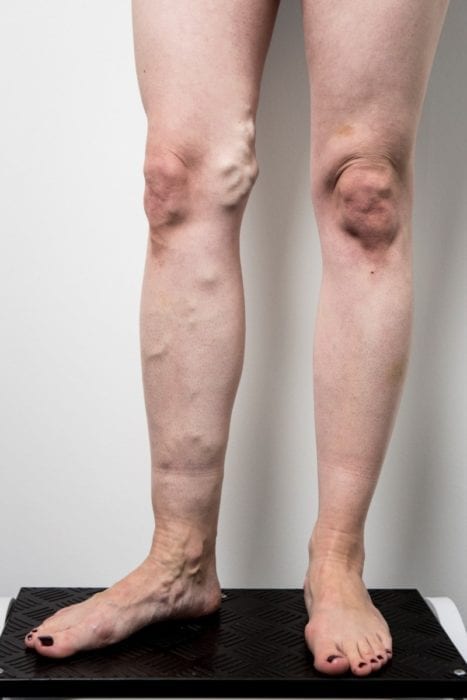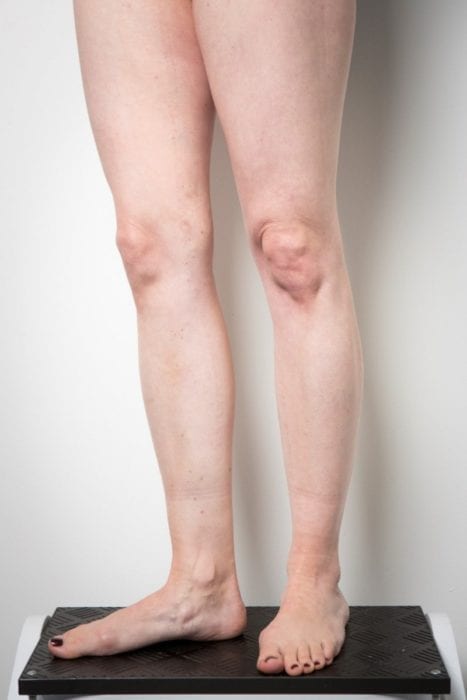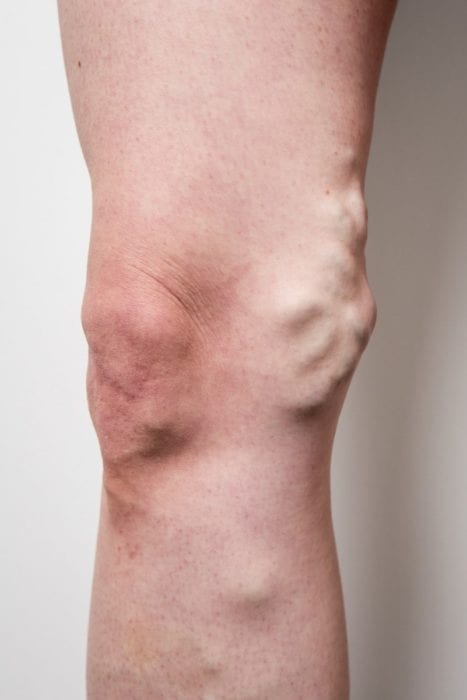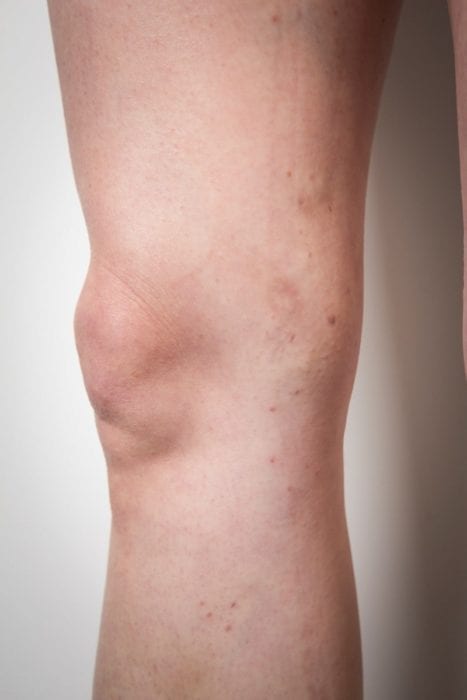Case Study: Emilie
One in three of us suffer from painful and unsightly varicose veins but there are new ways of treating them. Here Emilie explains why she decided to get her varicose veins treated.
It was a passing comment from a relative that made Emilie Marsden realise she had to finally do something about her varicose veins.
Emilie, 37, had first noticed the clump of blue, bulging veins developing near her right knee when she was in her early 20s. They quickly became so unsightly that she stopped wearing shorts or skirts. The veins became more noticeable following the birth of her children, Freddie, four and Fjóla, two.
Contrary to popular perceptions, varicose veins – which affect one in three of us – can occur at any age, even as early as adolescence.
Causes include pregnancy, having a close relative with the condition and being overweight.
However, the idea that people who stand on their feet all day are more at risk of developing varicose veins is a myth. Getting varicose veins has nothing to do with whether you sit or stand at work. Although for those who are sufferers, standing still or sitting without moving for long periods will cause them to deteriorate more quickly, triggering problems such as painful veins, clots and ulcers.
“Varicose veins are often thought of as a disorder of the elderly but we’re seeing many patients in their 20s, 30s and 40s,” says Veincentre vascular surgeon Dr. David West. “They can develop at any age and it is generally better to get them treated sooner rather than later. This is not because it makes treatment more difficult or less successful if you leave it, but if we treat veins earlier the patient has longer relief of symptoms and less time with the anxiety of unsightly veins.”
Emilie’s varicose veins were caused by faulty valves in the great saphenous vein, which runs from the ankle to the groin and takes blood back up the leg to the heart. If the valves are faulty, the blood floods back down the leg, the pressure rises and the branches of the vein become distended, causing pain as well as looking unsightly.
Emilie’s first port of call was her local hospital in Gloucester. “They were beginning to cause me pain so I thought I could have them treated on the NHS,” she says. However, she soon discovered that procedures such as varicose vein removal are considered to be “cosmetic” and therefore not covered by the NHS. Patients must now also be at risk of developing other problems, such as painful ulcers, to be considered eligible.
Increasing numbers of people are therefore seeking varicose veins treatment privately, despite varying costs, which can differ by thousands of pounds depending on the clinic. Emilie was treated by Dr. West at our Stoke-on-Trent clinic.
“Emilie had fairly typical – although larger than normal – clumps of varicose veins on one leg only,” explains Dr. West. “They were an embarrassment but also caused significant symptoms which interfered with her work and social life.”
Emilie’s Treatment
The treatment took place in three stages.
Firstly, the veins were scanned and mapped using ultrasound to identify the problem. Then, the large vein with the faulty valves was treated using Endovenous Laser Ablation (EVLA). A laser fibre was placed inside the vein, which heated the vein to treat the faulty valves. Dr West then performed Avulsions, a procedure which involves the vein being teased out using a crochet hook through a nick in the skin. Both procedures were carried out under local anaesthetic in one sitting and took an hour in total.
Six weeks later, Emilie returned for a follow up appointment, where she also had foam sclerotherapy to treat the remaining veins. This procedure involves a foam being injected into the vein, which displaces the blood and seals the vein shut, allowing the body to then naturally absorb the dead tissue.
After each visit, the only aftercare was the minor discomfort to wear stockings for a week and Emilie is delighted with the results.




